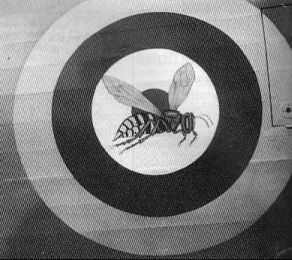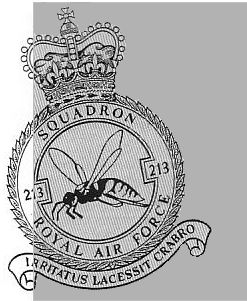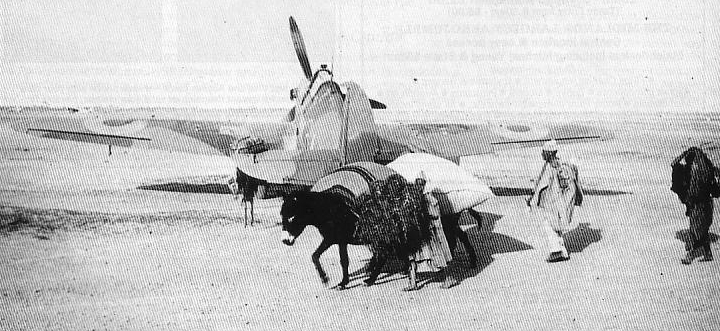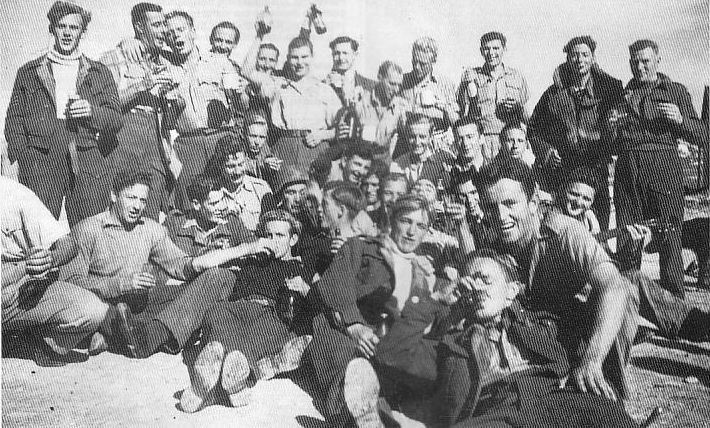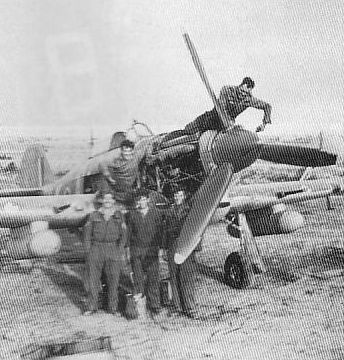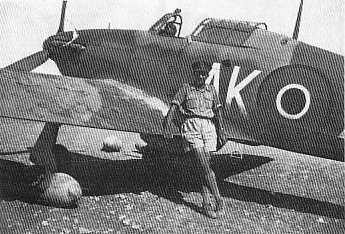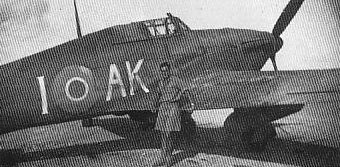Formed in April 1918 by renumbering 13 ( Naval) Squadron, the
unit operated Sopwith Camels until returning to the UK in March
1919, subsequently disbanded in December. It was not until
March 1937 that the 213 Fighter Squadron was reborn; the
outbreak of World War two saw the unit equipped with
Hurricane Is, which took part in ops over France, followed by a
heavy involvement in the Battle of Britain. May 1941 brought a
move on board HMS Furious to the Middle East for what
was to become a hectic two year period of fighter
operations. With the Allied invasion of Italy, 213
followed along and by July 1944 was operating with
the Balkan Air Force out of Biferno. A short lived
interval ( Feb - June 1944) with Spitfires gave way
to the Mustang era, which was to see the
Squadron into the post war period, September
1945 saw a deployment back to the Middle East, to
Ramat David in Palestine, followed in January
1947 by re-equipment with the Tempest F.6.
The jet age arrived in November 1949
in the shape of the Vampire FB.5,
subsequently followed by the FB.9, before
disbandment in September 1954, A final period of life came with the Canberra B(I)6, 213 being the only unit to operate this


